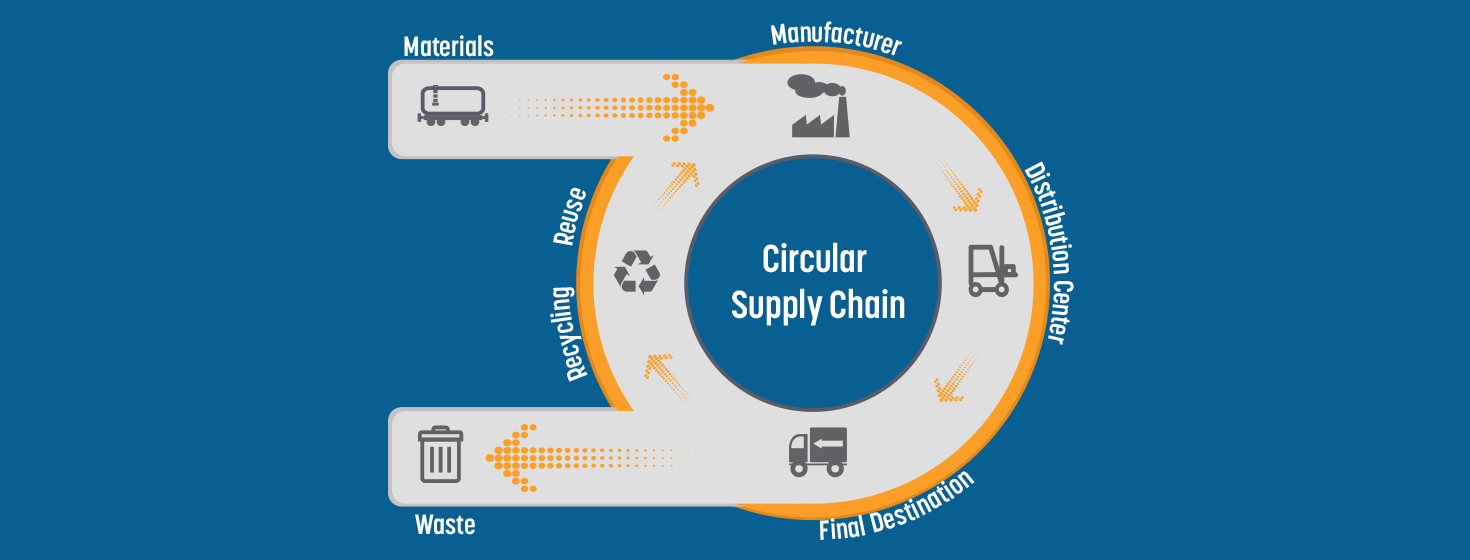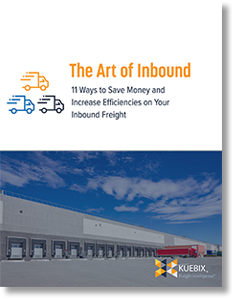Circular Supply Chain
The phrase ‘input equals output’ has been flipped on its head.
Now, modern supply chains are seeing the benefits of ‘output equals input’ in their operations.
In the past, supply chains were architected in a linear fashion.
They started with raw material suppliers shipping materials to a manufacturing facility or assembly plant, which in turn shipped finished goods or parts further down the supply chain to a distribution center to be delivered to end customers.
The workflow was point-to-point, linear in fashion, and end-products, after a while, typically ended in the trash.
Today’s supply chains are becoming circular by adding a link to connect the beginning and end of the chain.
This link encompasses returns and recycling, improving sustainability and the environment.
The circular supply chain is “lean” in nature, eliminating waste and reducing the carbon footprint.
It also lowers costs while passing on sustainability benefits to trading partners.
Ever heard the quote, “One man’s trash is another man’s treasure”
That is what the circular supply chain is about – taking apparent waste materials and returned goods and turning them into products which can be resold.
Circular supply chains turn waste into opportunities as regulations on recycling and proper disposal of manufacturing byproducts become tighter.
Often byproducts can be reclaimed and re-used within the manufacturing process where companies can develop new revenue sources for products that were previously discarded.
Many government regulations are pushing businesses to adopt the circular supply chain by creating laws and regulations around recycling and waste disposal. These include:
- EU Packaging Directive – requires all countries in the EU to recycle 50% of their packaging waste.
- Japanese Recycling Laws – require businesses to recycle packaging materials into something reusable.
- California Recycled Content Laws – no plastic bags, 25% of all plastic containers must be recycled, and more.
- UK Landfill Directive – all UK-based companies must recycle or treat their waste products, regardless of their size and turnover.
Supply chain sustainability is becoming more and more important as new regulations and social initiatives impact shippers.
There are many ways to reduce the carbon footprint of shipping freight, to learn more about how Kuebix helps shippers reduce their footprints read: Achieving Logistics Sustainability Goals with the Assistance of a TMS.
Related Article: How the Circular Supply Chain Model Will Replace the Linear Supply Chain by 2020
Related White Papers & eBooks
Driving Supplier, Carrier and Customer Collaboration New!
This ebook describes how through the use of collaboration portals with various stakeholders, you will be able to effectively manage your cost of goods and consistently meet the expectations of your internal and external customers. Download Now!
The Art of the Inbound: 11 Ways to Improve Your Inbound Shipping Operations
This ebook provides a guide to benchmark your company against best practices in the transportation and shipping industry and helps to put together a strategic approach to capitalizing on the opportunities to manage the “art of the inbound.” Download Now!
The Complete Buyer’s Guide to Transportation Management Systems
There is almost no limit to how a Transportation Management System can benefit your unique supply chain, but the key to success is finding the right one for your goals, so, before selecting a TMS, use the 12 questions in this buyer’s guide to find the best solution for your company. Download Now!
Effectively Managing Big Data in Your Supply Chain
In this white paper, we’ll explain what the term “big data” means to the typical supply chain, introduce effective strategies for managing and leveraging that data, show how one grocer is using predictive analytics to harness its own big data, and explain the “first steps” that companies need to take down the path to effective management of their big data. Download Now!
More Resources from Kuebix
Article topics
Email Sign Up






















